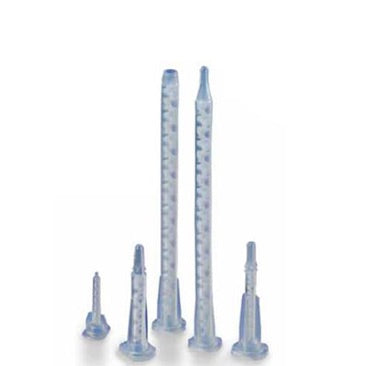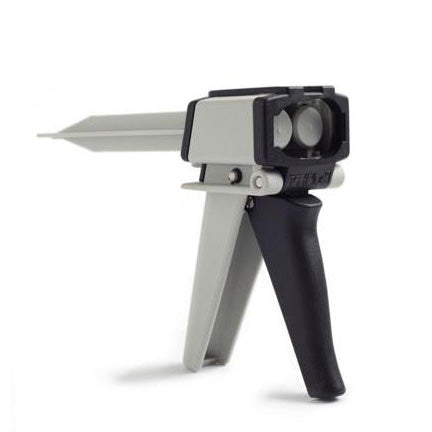Bonding Steel
Steel is a type of metal alloy primarily made of iron and a small amount of carbon. There are also several grades of steel depending on its composition. It is heavily used in construction and manufacturing because of its great strength and durability. Steel is also known for its resistance to corrosion, low conductivity, and recyclability. For all these great properties and more, steel has a large number of applications in a wide variety of industries.
While bolts, anchors, and rivets are still a popular option to bond steel, more and more manufacturers are turning to adhesives over mechanical fasteners. Adhesives are lighter weight and more versatile than mechanical fasteners. Adhesives can also be resistant to corrosion. Unfortunately, not every adhesive is made to glue steel. In fact, many adhesives do not have the sheer strength to do so or struggle to bond to steel’s slick surface.
You need to find an adhesive for steel specifically and perform proper surface preparation to get a lasting bond for your application. Especially if you are gluing steel to wood, plastic, or another material, you need to make sure you have the right adhesive for the job and are applying it correctly.
The Best Adhesives for Steel
Using the right adhesive for your material matters. Because there are so many adhesives to choose from but not a lot of adhesives for steel specifically, we want to help. We are sharing some of our top recommendations for glues for steel so you can get a lasting bond.
-
![Infinity Bond MMA 422 Slow Set High Strength Methacrylate Adhesive]()
Bonding Steel: Infinity Bond MMA 422 Methacrylate Glue
One of the best glues for steel, this adhesive comes in a cartridge with a 10:1 ratio. It has high weather, temperature, and impact resistance for lasting bonds. As a slow setting adhesive, it is perfect for larger surface areas and applications where setting the substrates takes time. Each cartridge also comes with two static mixing nozzles.
-
![Henkel Loctite AA H8500 490 ml Cartridge]()
Bonding Steel: Loctite AA H8500 Steel Bonder
This product is a methacrylate adhesive that comes in a 2-part gray paste. What makes it such a good steel adhesive glue is its great peel and impact strength. It cures at room temperature and also contains spacer beads to decrease excessive squeeze out from over clamping.
-
![490 mL cartridge of Infinity Bond H8500]()
Bonding Galvanized Steel: Infinity Bond H8500 Tough Adhesive
A strong, two-part adhesive, this adhesive is a great choice for gluing galvanized steel in particular. It is chemical, impact, and shock resistant with a working time of 20 to 25 minutes. It can also be used for gap filling up to 0.5 inches.
-
![300 ml Cartridge of SikaSeal-330 Seam Sealant]()
Seam Sealing Powder-Coated Steel: SikaSeal 330 Seam Sealer
When working with steel that will be powder coated, SikaSeal 330 seam sealer is often the best fit. It is one of the only products of its kind that can successfully seal seams and joints before powder coating is applied. It has no sealer read-through, won’t crack, and is compatible with all powder coat colors for a professional finish. Unlike the few other similar products on the market, it can also withstand temperatures up to 446°F.
Types of Adhesives to Bond Steel
Certain types of adhesives are better suited for steel than others. In general, epoxies, MMAs, and cyanoacrylate adhesives are regularly used to bond different types of metal like steel. Threadlockers adhesives and retaining compounds are also commonly used in metal applications. Because there are a lot of factors at play, the best adhesive for you will depend on the specific application and product.
How to Glue Steel
Finding a strong steel glue can be challenging because steel is nonporous with a smooth surface. As a result, it can be harder for adhesives to grip the surface and interlock. Along with choosing a steel metal glue, you also need to perform proper adhesive surface preparation.
Different products may have slightly different recommendations for surface preparation, so always follow the manufacturer’s instructions. In many cases to prepare steel for bonding, you should wipe down the surface of loose debris and degrease it with a solvent like isopropyl alcohol.
After the substrate is dry, the next step is abrasion to further remove contaminants as well as rough up the surface for better bonding capabilities. There are several different methods of abrasion including sand blasting, wire brushing, and more. The best technique will depend on the adhesive and substrate. Once the abrasion step is complete, the substrate should be cleaned and degreased again to remove the debris created by the abrasion.
When working with steel, you often need chemical treatment to improve adhesion. For mild steel, the substrate is usually submerged in a chemical bath of ethyl alcohol and orthophosphoric acid for a specific amount of time. The chemical bath also needs to be a certain temperature for best results. Once the chemical bath is complete, the substrate should be rinsed and dried before use.
Get More Help
Still looking for help on finding the right sealant or glue for a steel application? Our adhesive experts probably have the answer. We have a diverse collection of metal adhesives as well as the expertise to point you in the right direction. Contact us today for a customized product recommendation.
Recommended Products
Frequently Asked Questions
Yes. With an adhesive for steel to steel bonding and the right surface preparation, you can glue steel together for a lasting bond.
Yes. There are super glues also called cyanoacrylates that are steel to steel glues made for these type of applications. With the right surface preparation, you should be successful. That being said, your everyday super glue that you find at home cannot be expected to work for industrial steel applications.
Ask a Question
Have questions? Our team of adhesive experts can help. Submit your questions and we'll get you answers right away. We're here to help.











